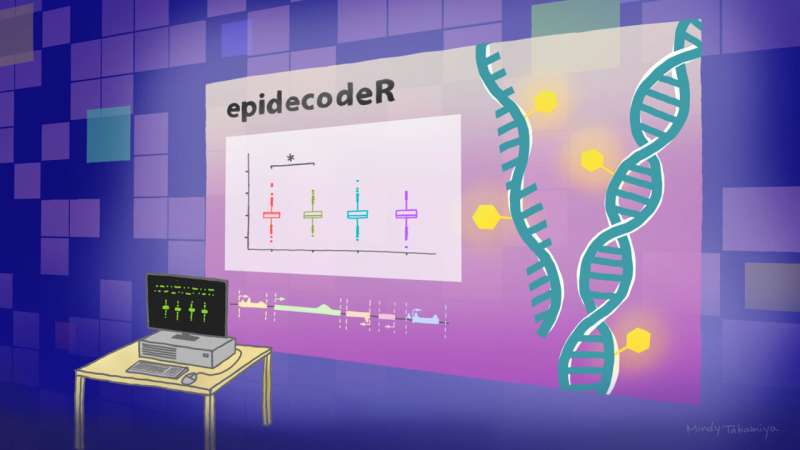This article has been reviewed according to Science X's editorial process and policies. Editors have highlighted the following attributes while ensuring the content's credibility:
fact-checked
trusted source
proofread
New tool helps decipher gene behavior

Scientists have extensively researched the structure and sequence of genetic material and its interactions with proteins in the hope of understanding how our genetics and environment interact with diseases. This research has partly focused on 'epigenetic marks,' which are chemical modifications to DNA, RNA, and the associated proteins (known as histones).
Epigenetic marks influence when and how genes get switched on or off. They can also instruct cells about how to interpret and use genetic information, influencing various cellular processes. Changes in epigenetic marks, therefore, significantly impact gene regulation and cellular functions, which means they might contribute to disease. By studying epigenetic marks, researchers can clarify their role in health and disease and potentially discover new avenues for treatment.
While researchers can identify and compare epigenetic marks, understanding the correlation between specific modifications and how genes work has remained challenging. To help overcome this, Dr. Dan Ohtan Wang and Dr. Kandarp Joshi have created a new tool called epidecodeR. The user-friendly tool, published in Briefings in Bioinformatics , enables biologists to quickly check if a modification affects how a gene responds in specific situations.
"If a positive correlation is found, this could motivate scientists to confirm the findings, helping them understand the role of these gene modifications in various conditions, including cancer and neurological disorders," explains Joshi, a researcher at the Institute for Integrated Cell-Material Sciences (iCeMS).
The team used statistical methods to categorize groups of genes based on how many modifications they had. They showed that EpidecodeR can predict the role of specific modifications, such as altering certain proteins or using drugs, and how these could impact gene activity.
"We used epidecodeR to successfully predict how a protein called histone deacetylase affects the activity of genes," says Wang, a visiting professor at iCeMS who led the study. "We also found epidecodeR to be effective in identifying substances that can block another protein, called RNA demethylase, and we explored how changes in proteins called histones might be related to drug abuse."
The researchers plan to conduct further studies to improve epidecodeR's accuracy and specificity. "We want to include more details concerning where, how, and how many modifications occur in genes," says Joshi. "As the data becomes more complex, we also aim to provide users with various statistical tests to enhance the capabilities of the tool."
More information: Kandarp Joshi et al, epidecodeR: a functional exploration tool for epigenetic and epitranscriptomic regulation, Briefings in Bioinformatics (2024). DOI: 10.1093/bib/bbad521
Provided by Kyoto University



















